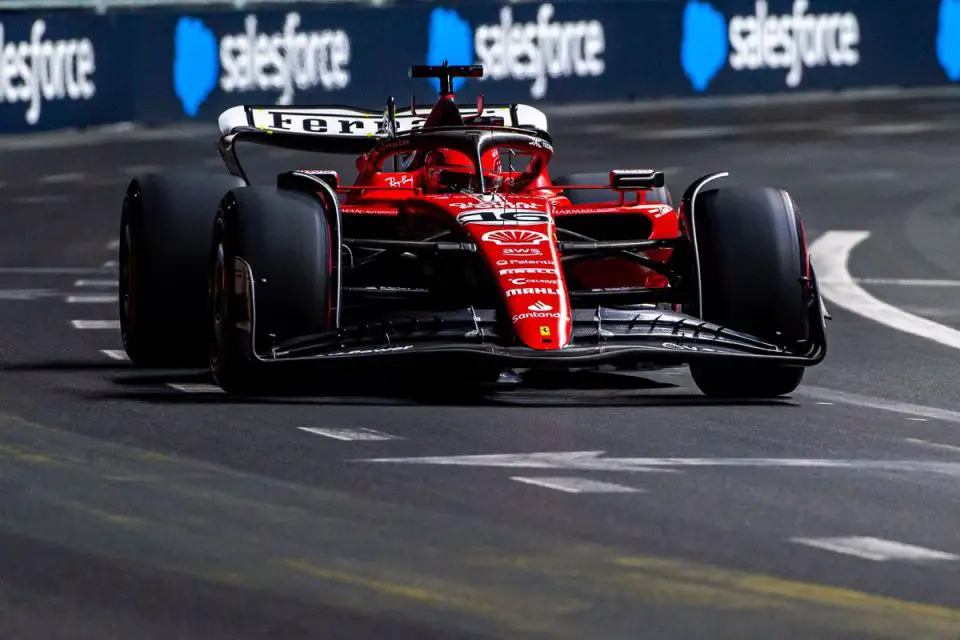Ferrari Seeks Compensation for Carlos Sainz’s Crash at Las Vegas Grand Prix
Ferrari Team Principal Fred Vasseur announced plans for discussions with Liberty Media regarding compensation for Carlos Sainz’s crash during the Las Vegas Grand Prix’s first practice session. The crash, which involved an unfixed drain hole cover, resulted in significant damage to Sainz’s car, impacting the team’s finances and spare parts stock.
Key Takeaways:
- Substantial Damage and Financial Impact: Carlos Sainz’s crash at the Las Vegas GP caused extensive damage to his SF-23, affecting the chassis, power unit, and energy store. This incident has significantly impacted Ferrari’s budget, especially considering the budget cap in Formula 1.
- Precedent for Compensation: Ferrari’s intention to seek compensation follows a precedent set during the 2017 Malaysian Grand Prix, where Haas received a financial settlement for damages caused by a track-related incident. Team Principal Vasseur emphasizes the need for a discussion about the financial and sporting consequences of such incidents.
- Safety and Regulation Concerns: Vasseur raised concerns about the time gap between the yellow and red flags during the incident, questioning the track safety measures. He highlighted the need for better management of track conditions and faster response to potential hazards.

In the wake of a severe crash during the Las Vegas Grand Prix, Ferrari’s Team Principal Fred Vasseur is gearing up for crucial discussions with Liberty Media, the stakeholders of the Grand Prix. The incident, which occurred in the first practice session (FP1), saw Carlos Sainz’s car sustaining heavy damage after colliding with an unsecured drain hole cover. This crash not only destroyed the chassis of the SF-23 but also its power unit and energy store, presenting a substantial financial setback for Ferrari.
The situation brings to mind the 2017 Malaysian Grand Prix, where a similar incident had occurred. Back then, Haas F1 Team’s Romain Grosjean suffered car damage due to a loose drain cover, leading to a financial settlement after negotiations with the organizers. This precedent suggests that Ferrari’s pursuit of compensation might find a favorable outcome.
Vasseur, when addressing the media, stated, “This will be a private discussion that I will have with the stakeholders of this.” He pointed out that the crash has strained the team’s finances, particularly affecting their budget cap spending. The cost implications are extensive, as Vasseur detailed, “For sure you have a lot of extra costs. The loom was damaged, the gearbox was damaged, the battery was damaged, the engine is dead.”
Beyond the financial repercussions, there are also safety and regulatory concerns. Vasseur criticized the delay in the deployment of the red flag following the incident, noting a significant gap between the initial yellow flag and the subsequent red flag. He argued that this delay was excessive and potentially dangerous, saying, “It means that when they put the yellow flag that they saw something on track. And they took one minute before they put the red flag.”
Furthermore, Vasseur plans to discuss the broader implications of such incidents on teams, particularly in relation to the F1 cost cap. He believes that damages beyond a team’s control should be considered separately from the cost cap, a point he intends to raise in his discussions.
In conclusion, Vasseur’s comments underscore the multifaceted challenges faced by Formula 1 teams when track-related incidents occur. The financial, regulatory, and safety aspects all need to be addressed to ensure fair competition and the well-being of drivers and teams. Ferrari’s upcoming discussions with Liberty Media could set significant precedents for how Formula 1 manages such incidents in the future.




